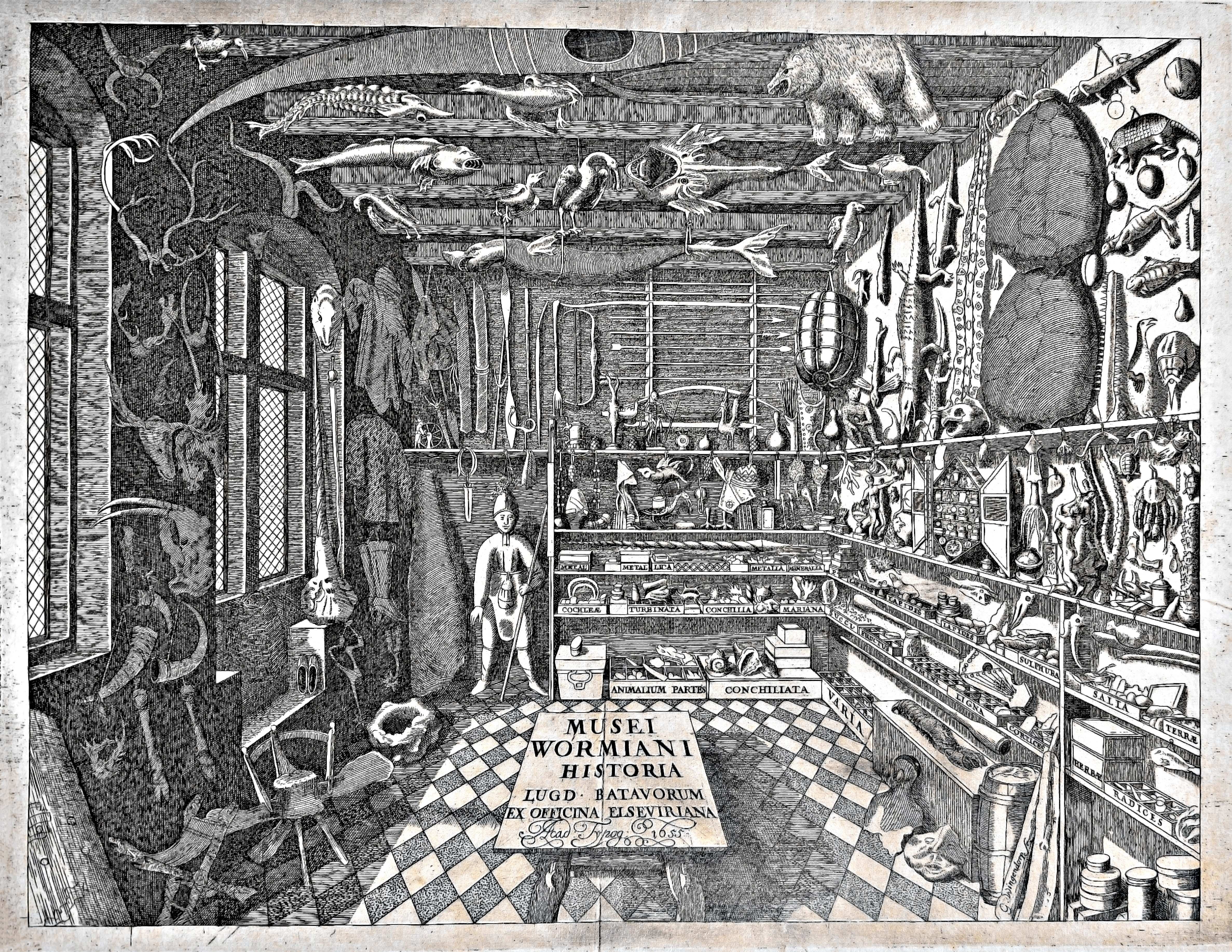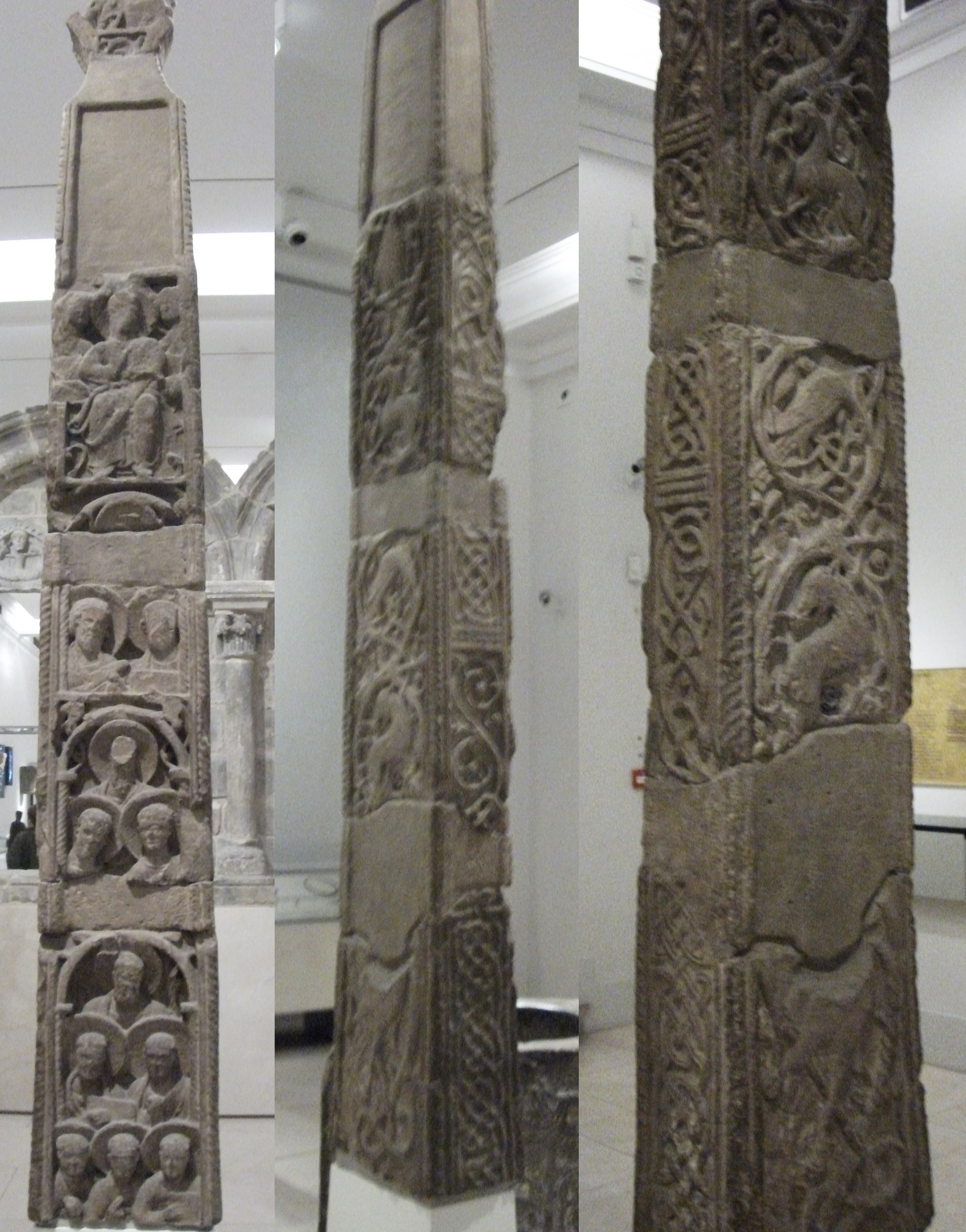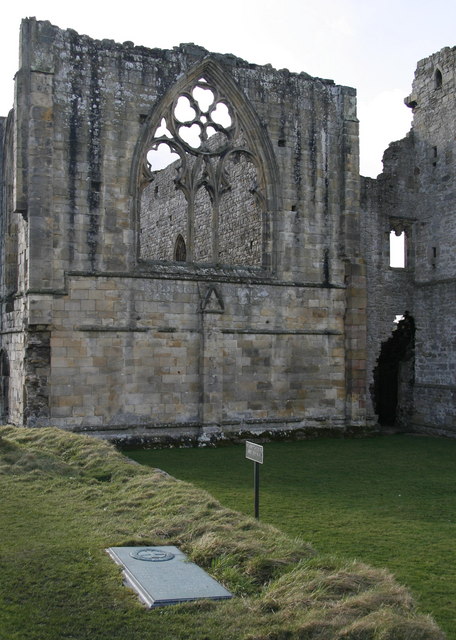|
Easby, Richmondshire
Easby is a hamlet and civil parish in the Richmondshire district of North Yorkshire, England. It is situated near Richmond on the banks of the River Swale, approximately north west from the county town of Northallerton. The population taken by ONS was less than 100. Population information is included in the parish of Hudswell. History The hamlet is mentioned in the Domesday Book of 1086 as '' Asebi'', whose lands belonged to Count Alan of Brittany. He had granted the lordship of the manor to ''Thor'' at the time of the Norman Conquest, but it had passed to ''Enisant Mussard'', Constable of Richmond Castle, by 1086. There were seven households and five ploughlands at a taxable value of six geld units. The manor passed from Enisant to Roald de Richmond and then to descent of the lords of Constable Burton. The lands were held as demesne lordships by the Marmion and Fitz Hugh families into the 12th century, but eventually they were granted to the nearby Abbey who held them unti ... [...More Info...] [...Related Items...] OR: [Wikipedia] [Google] [Baidu] |
Easby Hall, Richmond
Easby Hall near Richmond in North Yorkshire, England is a building of historical significance and is listed on the English Heritage Register. Built in 1729 by the Reverend William Smith, Easby Hall became the home of many notable people for the next two and a half centuries. It now provides bed and breakfast accommodation and is a venue for special events. Early history Reverend William Smith (–1735) built the Hall in 1729 shortly after he bought the Easby Estate. He was the son of Dr William Smith who lived in the village of Easby. His mother was Anne Layton and his uncle was Henry Layton a philosopher and theological writer. William was educated at the local grammar school in Richmond and then went to the University of Oxford to obtain his degree. He was an antiquarian and obtained a Fellowship at Oxford where he remained for the next twelve years. In 1704 he became the Rector of Melsonby and retained this job until his death in 1735. He continued his writing while he ... [...More Info...] [...Related Items...] OR: [Wikipedia] [Google] [Baidu] |
Charles I Of England
Charles I (19 November 1600 – 30 January 1649) was King of England, Scotland, and Ireland from 27 March 1625 until Execution of Charles I, his execution in 1649. He was born into the House of Stuart as the second son of King James VI of Scotland, but after his father inherited the English throne in 1603, he moved to England, where he spent much of the rest of his life. He became heir apparent to the kingdoms of England, Scotland, and Ireland in 1612 upon the death of his elder brother, Henry Frederick, Prince of Wales. An unsuccessful and unpopular attempt to marry him to the Spanish Habsburg princess Maria Anna of Spain, Maria Anna culminated in an eight-month visit to Spain in 1623 that demonstrated the futility of the marriage negotiation. Two years later, he married the House of Bourbon, Bourbon princess Henrietta Maria of France. After his 1625 succession, Charles quarrelled with the Parliament of England, English Parliament, which sought to curb his royal prerogati ... [...More Info...] [...Related Items...] OR: [Wikipedia] [Google] [Baidu] |
Antiquarian
An antiquarian or antiquary () is an fan (person), aficionado or student of antiquities or things of the past. More specifically, the term is used for those who study history with particular attention to ancient artifact (archaeology), artifacts, History of archaeology, archaeological and historic Archaeological site, sites, or historic archives and manuscripts. The essence of antiquarianism is a focus on the empirical evidence of the past, and is perhaps best encapsulated in the motto adopted by the 18th-century antiquary Sir Richard Hoare, 2nd Baronet, Sir Richard Colt Hoare, "We speak from facts, not theory." The ''Oxford English Dictionary'' first cites "archaeologist" from 1824; this soon took over as the usual term for one major branch of antiquarian activity. "Archaeology", from 1607 onwards, initially meant what is now seen as "ancient history" generally, with the narrower modern sense first seen in 1837. Today the term "antiquarian" is often used in a pejorative sense ... [...More Info...] [...Related Items...] OR: [Wikipedia] [Google] [Baidu] |
Victoria And Albert Museum
The Victoria and Albert Museum (often abbreviated as the V&A) in London is the world's largest museum of applied arts, decorative arts and design, housing a permanent collection of over 2.27 million objects. It was founded in 1852 and named after Queen Victoria and Prince Albert. The V&A is located in the Royal Borough of Kensington and Chelsea, in an area known as "Albertopolis" because of its association with Prince Albert, the Albert Memorial and the major cultural institutions with which he was associated. These include the Natural History Museum, the Science Museum, the Royal Albert Hall and Imperial College London. The museum is a non-departmental public body sponsored by the Department for Digital, Culture, Media and Sport. As with other national British museums, entrance is free. The V&A covers and 145 galleries. Its collection spans 5,000 years of art, from ancient times to the present day, from the cultures of Europe, North America, Asia and North Africa. Ho ... [...More Info...] [...Related Items...] OR: [Wikipedia] [Google] [Baidu] |
Easby Cross
The Easby Cross is an Anglo-Saxon sandstone standing cross from 800–820, now in the Victoria and Albert Museum, London. It originally came from Easby near Richmond in the Richmondshire district of North Yorkshire, where a plaster replica is kept in the church. Easby was then in the Kingdom of Northumbria. The width of the long faces at the bottom of the lowest fragment is , with a depth of , and the whole cross would originally have been up to high. Four fragments of the cross survive, which have been fitted into a reconstruction in the museum. Three of these were used, probably in the late 12th century, in the rebuilding of St Agatha's Church, Easby, from where they were recovered in the 20th century. All had one face visible in the wall surface; two were on exterior faces of the church, and one on the interior. The fragment with ''Christ in Majesty'' on the main face was recovered from a field wall nearby before 1869, and kept by the landowner until sold to the V&A i ... [...More Info...] [...Related Items...] OR: [Wikipedia] [Google] [Baidu] |
Anglo-Saxon Art
Anglo-Saxon art covers art produced within the Anglo-Saxon period of English history, beginning with the Migration period style that the Anglo-Saxons brought with them from the continent in the 5th century, and ending in 1066 with the Norman Conquest of England, whose sophisticated art was influential in much of northern Europe. The two periods of outstanding achievement were the 7th and 8th centuries, with the metalwork and jewellery from Sutton Hoo and a series of magnificent illuminated manuscripts, and the final period after about 950, when there was a revival of English culture after the end of the Viking invasions. By the time of the Conquest the move to the Romanesque style is nearly complete. The important artistic centres, in so far as these can be established, were concentrated in the extremities of England, in Northumbria, especially in the early period, and Wessex and Kent near the south coast. Anglo-Saxon art survives mostly in illuminated manuscripts, Anglo-S ... [...More Info...] [...Related Items...] OR: [Wikipedia] [Google] [Baidu] |
English Reformation
The English Reformation took place in 16th-century England when the Church of England broke away from the authority of the pope and the Catholic Church. These events were part of the wider European Protestant Reformation, a religious and political movement that affected the practice of Christianity in Western Europe, Western and Central Europe. Ideologically, the groundwork for the Reformation was laid by Renaissance humanism, Renaissance humanists who believed that the Bible, Scriptures were the only source of Christian faith and criticized religious practices which they considered superstitious. By 1520, Martin Luther, Martin Luther's new ideas were known and debated in England, but Protestants were a religious minority and heretics under the law. The English Reformation began as more of a political affair than a theological dispute. In 1527, Henry VIII requested an annulment of his marriage, but Pope Clement VII refused. In response, the English Reformation Parliament, Refo ... [...More Info...] [...Related Items...] OR: [Wikipedia] [Google] [Baidu] |
Henry VIII Of England
Henry VIII (28 June 149128 January 1547) was King of England from 22 April 1509 until his death in 1547. Henry is best known for his six marriages, and for his efforts to have his first marriage (to Catherine of Aragon) annulled. His disagreement with Pope Clement VII about such an annulment led Henry to initiate the English Reformation, separating the Church of England from papal authority. He appointed himself Supreme Head of the Church of England and dissolved convents and monasteries, for which he was excommunicated by the pope. Henry is also known as "the father of the Royal Navy" as he invested heavily in the navy and increased its size from a few to more than 50 ships, and established the Navy Board. Domestically, Henry is known for his radical changes to the English Constitution, ushering in the theory of the divine right of kings in opposition to papal supremacy. He also greatly expanded royal power during his reign. He frequently used charges of treason and ... [...More Info...] [...Related Items...] OR: [Wikipedia] [Google] [Baidu] |
Easby Abbey
Easby Abbey, or the Abbey of St Agatha, is a ruined Premonstratensian abbey on the eastern bank of the River Swale on the outskirts of Richmond in the Richmondshire district of North Yorkshire, England. The site is privately owned but maintained by English Heritage and can be reached by a riverside walk from Richmond Castle. Within the precinct is the still-active parish church, displaying 13th-century wall paintings. History The Abbey of St Agatha, Easby, was founded in 1152 by Roald, Constable of Richmond Castle. The inhabitants were canons rather than monks. The Premonstratensians wore a white habit and became known as the White Canons. Easby was a daughter house of the Abbey of St Mary and St Martial (Newsham Abbey) in Lincolnshire; it was the third Premonstratensian house funded in England. The White Canons followed a code of austerity similar to that of Cistercian monks. Unlike monks of other orders, they were exempt from episcopal discipline. They undertook preaching and ... [...More Info...] [...Related Items...] OR: [Wikipedia] [Google] [Baidu] |
Old Norse
Old Norse, Old Nordic, or Old Scandinavian, is a stage of development of North Germanic languages, North Germanic dialects before their final divergence into separate Nordic languages. Old Norse was spoken by inhabitants of Scandinavia and their Viking expansion, overseas settlements and chronologically coincides with the Viking Age, the Christianization of Scandinavia and the consolidation of Scandinavian kingdoms from about the 7th to the 15th centuries. The Proto-Norse language developed into Old Norse by the 8th century, and Old Norse began to develop into the modern North Germanic languages in the mid-to-late 14th century, ending the language phase known as Old Norse. These dates, however, are not absolute, since written Old Norse is found well into the 15th century. Old Norse was divided into three dialects: Old West Norse, ''Old West Norse'' or ''Old West Nordic'' (often referred to as ''Old Norse''), Old East Norse, ''Old East Norse'' or ''Old East Nordic'', and ''Ol ... [...More Info...] [...Related Items...] OR: [Wikipedia] [Google] [Baidu] |
William Smith (antiquary)
Reverend William Smith ( – December 1735) was an English antiquary responsible for the cataloguing of the archives of University College, Oxford, and composing an original and controversial history of the college, '' The Annals of University College''. Smith was a Fellow of Oxford University, from 1675 to 1704, and then the rector of Melsonby, from 1704 to 1735. Born in Easby, Richmondshire, Smith attended University College, Oxford from 1668 to 1678, gaining a BA and MA. Soon after elected a fellow of the college, Smith set about organizing, cataloguing and transcribing the contents of the college archives, creating archival resources still in use today. After a scandalous marriage as a fellow, Smith moved the college to purchase the living of Melsonby, and was appointed to its rectorship in 1704. There he lived for the rest of his life, corresponding with antiquaries and keeping abreast of the politics of University College. In one controversy a Master of the college res ... [...More Info...] [...Related Items...] OR: [Wikipedia] [Google] [Baidu] |

.jpg)








